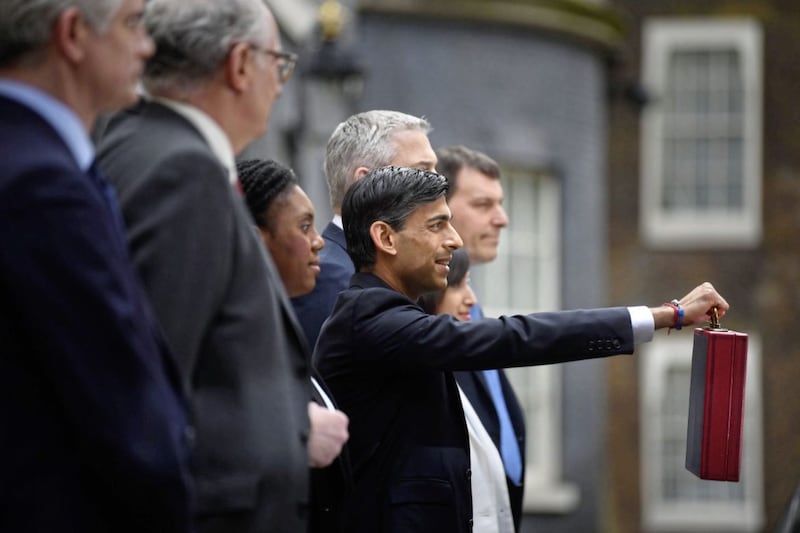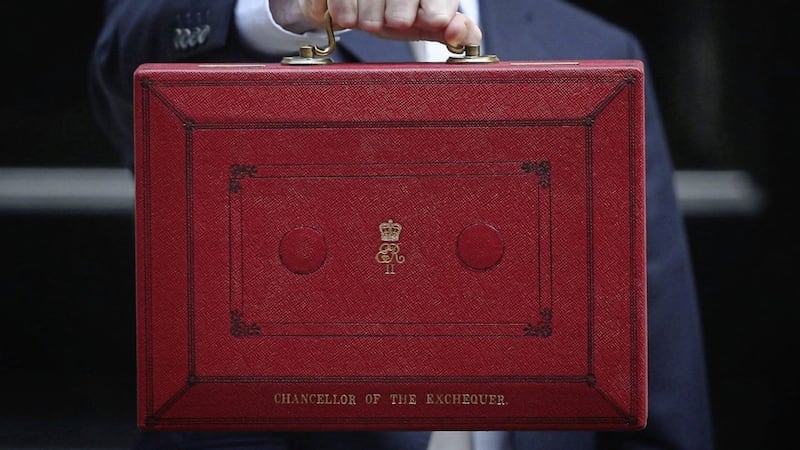RISHI Sunak may be a relative novice as Chancellor of the Exchequer, but he is already a veteran of economic statements and has outspent all of his predecessors.
And come the autumn, we can expect an even more extensive set of measures to protect and create jobs in the autumn Budget.
But it is worth looking ahead to what follows the stimulus phase, when arguably his biggest challenge is to come in the form of how to pay for it all whilst continuing to encourage an economic recovery.
To date, the approach has been one of borrowing... lots of borrowing.
While public expenditure has gone through the roof tax receipts have plummeted. The Office for Budget Responsibility (OBR) expects UK government borrowing of £370bn this year to plug the gap between expenditure and revenue – “the deficit”.
This equates to 15 per cent - 23 per cent of GDP and will mark a record high during peacetime and is close to WWII levels of borrowing.
In normal times, £370bn would fund health expenditure for two years. Meanwhile the overall stock of government debt is set to breach 100 per cent of GDP for the first time since the early 1960s.
The good news is debt interest rates have fallen significantly to record lows.
The bad news is that the OBR warns UK debt is on an ‘explosive’ path unless corrective action is taken. While the turbo-charged rise in debt has occurred within months, managing the debt from the pandemic will be the challenge for chancellors for decades to come.
Less than two years has passed since Theresa May declared “austerity is over” after eight years of spending cuts. But the steepest recession in 300 years and the biggest deficit in peacetime have raised questions of whether austerity or a variation of the theme will make a return?
According to the OBR, getting UK debt back down to 75 per cent of GDP will require £60bn of taxes rises or spending cuts in today’s money each decade for the next 50 years!
Outgoing OBR Chairman, Robert Chote, contextualized this as around half the levels of austerity that occurred after the financial crisis.
So will we now face 50 years of ‘austerity-lite’ or a permanent state of ‘semi-austerity’?
Two weeks ago Rishi Sunak flagged that the next phase (phase three) would be rebuilding.
Given the current wartime deficit it is perhaps useful to look at what lessons for today can be learned from the post-WWII rebuilding?
Economic conditions were extremely favourable after WWII. Interest rates were low and the economy was at full-employment.
Strong economic growth was aided by positive demographics – a growing and young population.
The combination of strong economic growth coupled with low interest rates and moderate inflation helped shrink the UK’s net public sector debt from a staggering 252 per cent of GDP in 1946/47 to 62.1 per cent just 25 years later in 1971/72.
Today interest rates are even lower but some of the challenges such as an ageing population and the threat from climate change are much greater. One key ingredient back in the post-WWII era was a tolerance for higher taxation.
The main burden for this increased taxation fell on income taxes. Taxes were raised across the board for all income levels but were increased significantly for the well-off.
For example, some households in the late 1940s experienced a doubling in their tax burden relative to their pre-war position.
Crucially the disruption from the war significantly raised the pain threshold for higher taxation. Will the pandemic do the same in the 2020s and beyond?

Most governments took the austerity route after the global financial crisis. This time, there simply isn’t the scope for public spending cuts – in fact it’s the opposite, as there will be greater demand for NHS and social care funding.
Taxation, not public spending, is set to do the heavy lifting as far as fixing the public finances are concerned.
Following the recent summer statement, Paul Johnson of the Institute for Fiscal Studies said: “A reckoning, in the form of higher taxes would have to come eventually”.
Since then the amount of tax chatter has accelerated. Last week a group of 83 wealthy individuals, including the film director Richard Curtis, called for ‘immediate, substantial and permanent’ higher taxes ‘on people like us’.
Similarly, we heard Ken Clarke, the 80-year-old former chancellor, engage in some ‘grey-on-grey’ fire regarding tax rises.
He pointed out that whilst older people and the wealthy have done well in this crisis, the poor and the young haven't, and more taxes, with burden sharing by the elderly and the wealthier a necessity.
A key development since the last recession is that the average UK pensioner is now financially better off than the average working-age person.
This has led to calls for the state pension’s triple lock to be downgraded to something more affordable. It is likely to be suspended temporarily due to the expected big swings in average earnings which would gift pensioners a double-digit rise in their pension in 2022.
Such is the scale of the fiscal challenge facing the UK simply focusing on taxing the rich or tweaking a few tax rates here and there isn’t going to cut it.
As followed WWII, we can expect all income groups to share the burden of higher taxation.
Similarly, targeting wealth is likely to feature in future budgets. Indeed, only last week Mr Sunak launched a review of Capital Gains Tax (CGT) – which is viewed as a wealth tax.
According to the former head of the Civil Service Gus O’Donnell, the introduction of a new wealth tax in the UK could be more likely than ever as the pandemic has created a platform for tax reform.
Given that most people’s wealth lies in their homes could we see the CGT exemption on primary residences targeted?
To date, the preference has been to break fiscal rules rather than manifesto pledges. Even before Covid-19 struck the Conservatives’ pledges not to raise the rates of income tax, national insurance contributions or VAT looked unsustainable.
The pandemic has made these pledges untenable. The health emergency has provided political cover for radical tax reform and to raise taxes.
Will we see the introduction of a new NHS tax for example? If not, we are least likely to see Mr Sunak become the first chancellor since Denis Healey in 1975 to raise the rate of income tax.
Rishi Sunak’s determination to do ‘whatever it takes’ has been impressive.
We have already seen spending policies introduced the like of which we would never have thought possible.
But as the Chancellor reminded us earlier this month “over the medium-term, we must, and we will, put our public finances back on a sustainable footing”.
In time we are likely to see taxation policies the like of which we would never have considered before Covid-19.
Mr Sunak has already outspent all his predecessors it is difficult to see how he will avoid out-taxing them too.
Richard Ramsey (richard.ramsey@ulsterbankcm.com) is Northern Ireland chief economist at Ulster Bank








